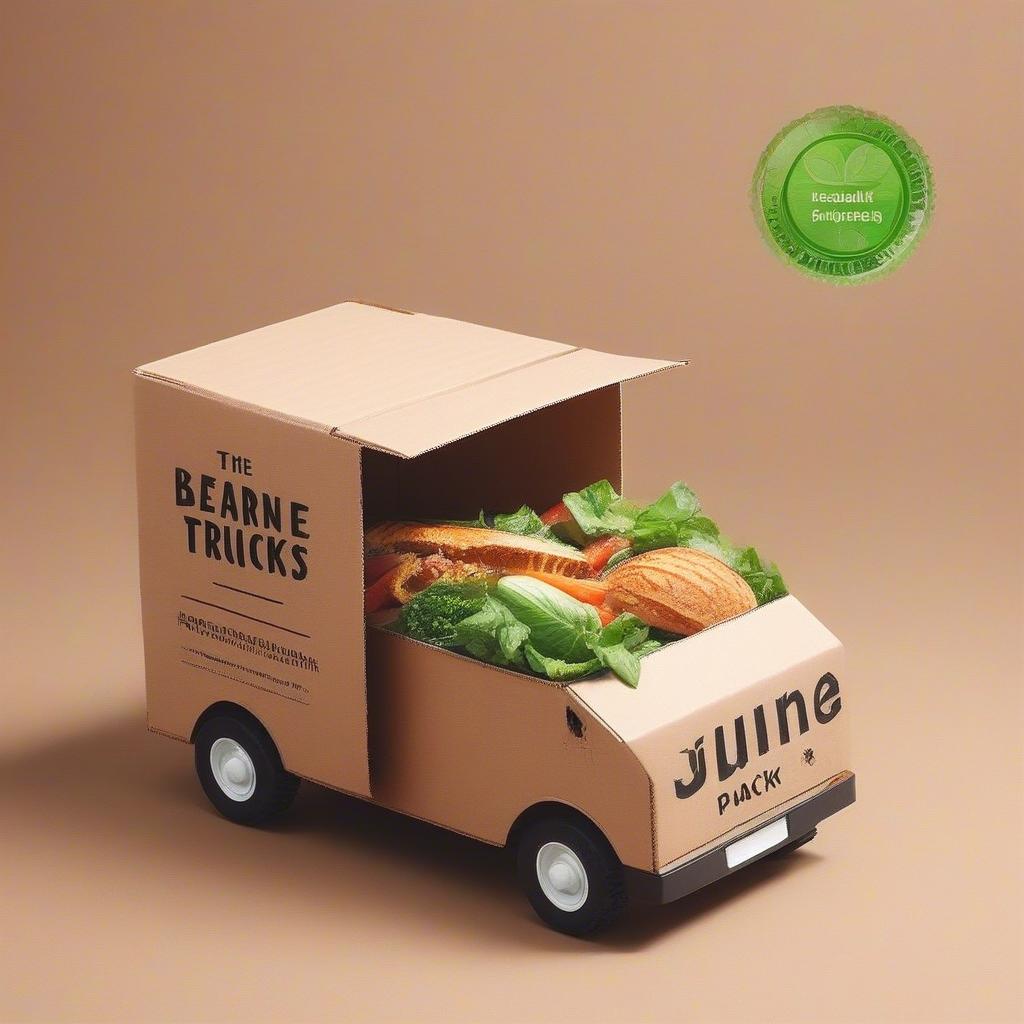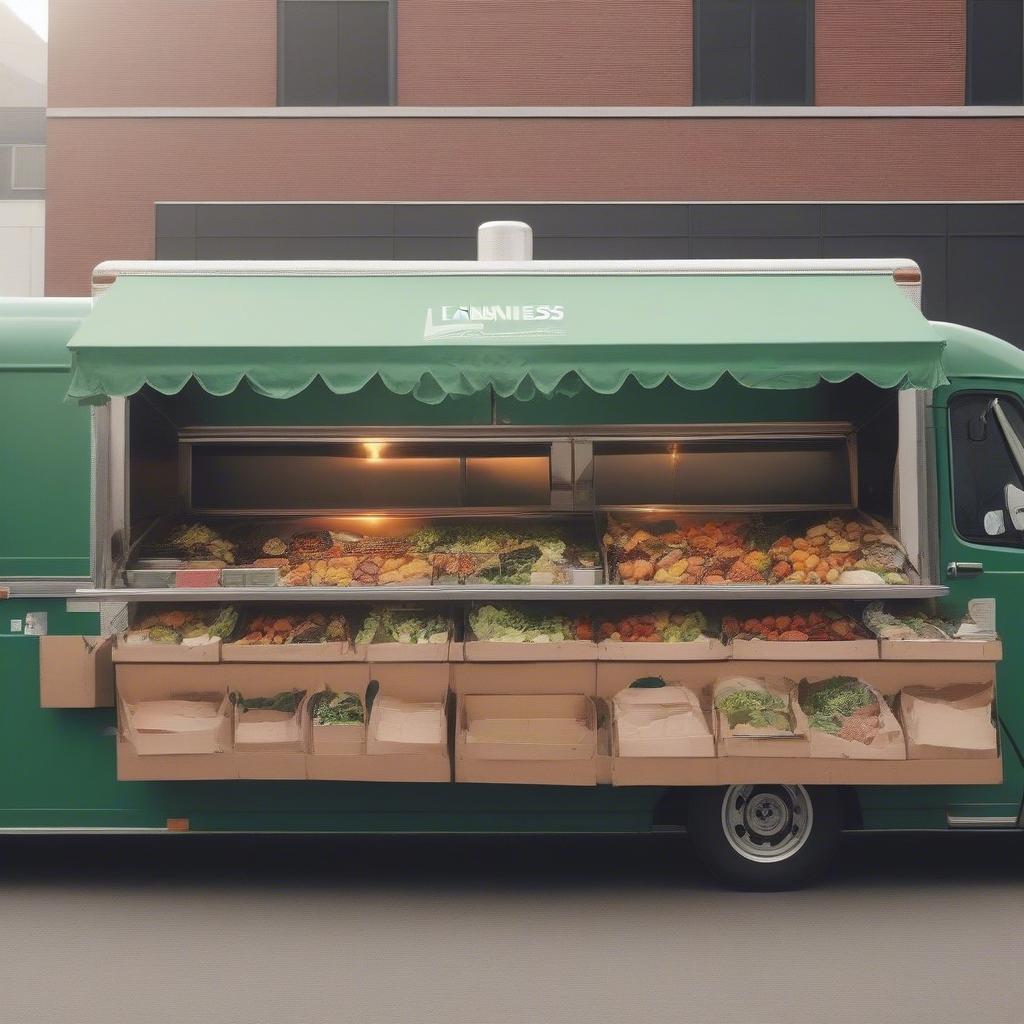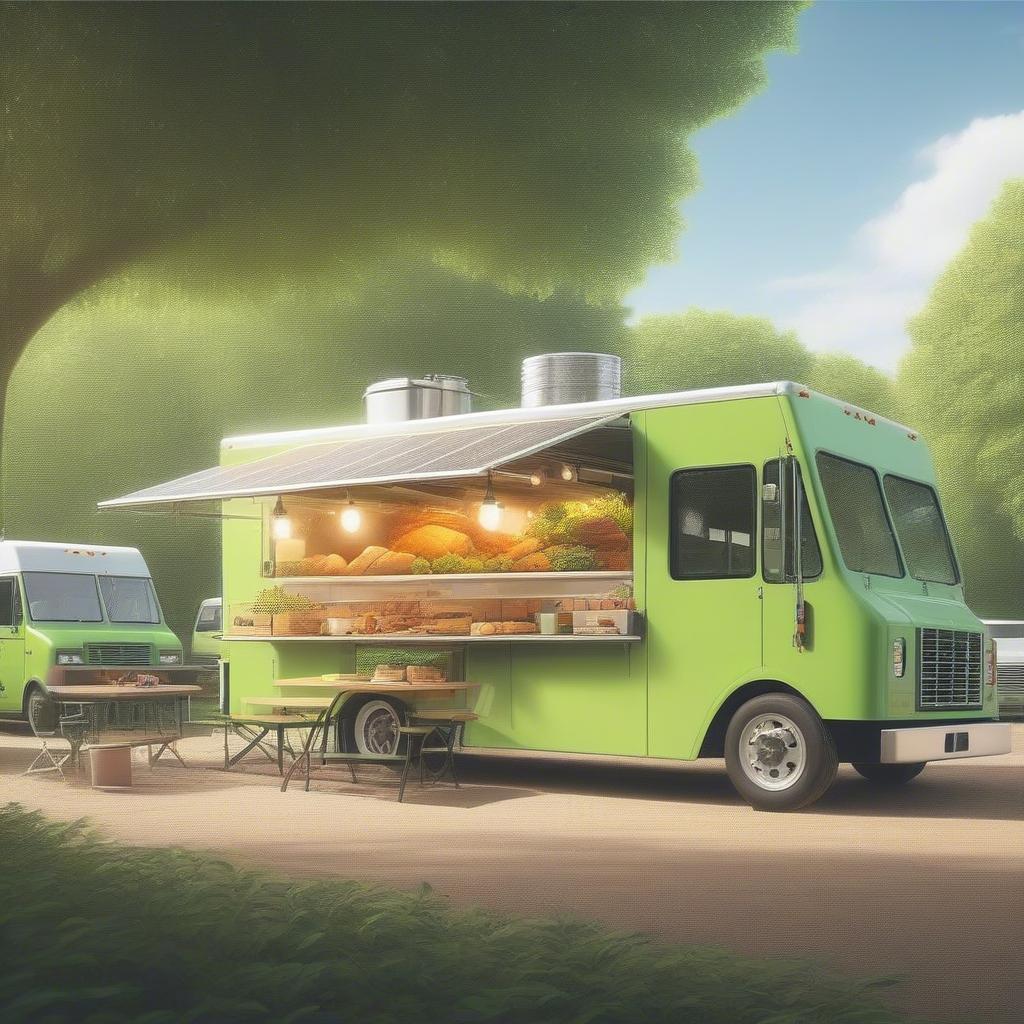
How to Set Competitive Prices for Your Food Truck Menu
Setting the right prices for your food truck menu isn’t just about covering costs; it’s about building a thriving business. It’s a delicate dance between attracting customers with value and ensuring your hard work pays off. Nail your menu pricing, and you’ll be well on your way to success. This guide will walk you through the essential steps to create a competitive food truck menu that’s both profitable and appealing, giving you actionable strategies and financial tips.
Understanding the Importance of Menu Pricing
Before diving into specific strategies, let’s acknowledge why menu pricing is so critical for your food truck.
More Than Just Numbers: The Psychology of Pricing
Pricing is deeply intertwined with customer perception. A price that feels “right” can encourage a purchase, while a price that feels too high can deter even the most interested customer. It’s about convincing customers that the value they’re receiving matches or exceeds what they’re paying. This psychological element is crucial, as customers aren’t always rational; they often make purchase decisions based on emotion and perception. Understanding this is your first step in creating a menu that resonates with your target audience.
The Bottom Line: Profitability and Sustainability
Ultimately, your menu pricing dictates your profitability. If your prices are too low, you might attract more customers, but you’ll struggle to cover your expenses, let alone generate a profit. Conversely, pricing too high might scare away customers, leaving you with unsold inventory and wasted potential. Achieving a balance allows you to operate sustainably, invest in your business, and grow over time. Smart menu pricing is the backbone of a thriving food truck, making it more than just about the numbers; it’s about creating a business that can flourish.
Competitive Positioning: Finding Your Niche
Competitive pricing allows you to carve out your own place in the market. If you’re selling gourmet burgers, you might price higher than a hot dog vendor, reflecting the ingredients and experience you provide. Understanding your competition and the value you offer is vital to finding the right price point. It’s not just about beating others on price but about demonstrating why your offering is worth what you charge. Effective pricing allows you to attract your ideal customers and build a loyal following.
Key Factors Influencing Menu Pricing
Setting the ideal price for your menu items involves considering several important elements. Ignoring these could lead to missed profits or an inability to compete.
Food Costs: The Foundation of Your Price
The first step in pricing is accurately calculating the cost of each dish. This involves breaking down the price of each ingredient and factoring in any waste. Here’s a simplified process:
- Calculate the Cost Per Serving: Track every ingredient, down to the last pinch of spice. For example, if a burger patty costs $2.00, the bun is $0.50, and other toppings are another $0.75, the food cost of the burger is $3.25.
- Factor in Waste: Not all food makes it to the plate. Factor in potential spoilage, scraps, and miscalculations into your cost calculation. Estimating waste adds a critical layer of accuracy to your pricing. A good rule of thumb is to add 5-10% on top of your raw ingredients cost.
- Consider Bulk Buying: Explore options to buy in bulk from wholesalers, this will reduce your cost of ingredients. Buying in bulk usually gives you lower per unit costs which in turn help in reducing your food costs. This can significantly lower your food costs and help to achieve more profit.
Understanding your food costs accurately gives you a firm foundation to build your pricing structure and ensure profitability.
Labor Costs: The Human Element
Your employees’ time is valuable, and their wages must be factored into your menu prices. Here’s how:
- Hourly Wage Calculations: Calculate your total labor cost per hour, including wages, benefits, and payroll taxes. If you have 2 employees, earning $15 per hour each and payroll tax is $5 per hour, the total labor cost per hour is $35
- Labor Time Per Item: How long does it take to prepare each item? Estimate the time required for each menu item. Calculate the amount of labor cost associated with each item you sell. For example, if you sell 10 burgers per hour, the labor cost per burger is $3.50 ($35/10).
- Include Overhead: Your hourly labor cost should also include some amount of administrative time. It includes expenses not related to making the food items and should include a fraction of it in the labor costs.
- Labor efficiency: The more efficient your labor use is the more you will save in your costs. Always try to improve efficiency for better profits.
Don’t underestimate the impact of labor cost on your menu prices. Failing to factor these costs can lead to underpricing your food.
Overhead Expenses: The Hidden Costs
Overhead expenses are the ongoing costs of running your business that are not directly tied to making the food itself. Here’s what to consider:
- Rent and Utilities: These include costs for your truck’s parking space, electricity, water, and any other utilities.
- Insurance and Permits: Factor in the cost of insurance policies and required permits.
- Maintenance and Repairs: Budget for regular maintenance and potential repairs of your truck and equipment.
- Marketing and Advertising: Include the expenses you incur to promote your truck and attract customers.
- Miscellaneous Expenses: There are always unexpected costs; having a buffer will help you manage unforeseen situations.
Ignoring these costs in your menu pricing can cripple your profitability.
Competitive Analysis: Know Your Rivals
Understanding what your competitors charge is essential.
- Research Local Food Trucks: Visit other food trucks in your area, note their prices and menu items.
- Compare Pricing Structures: Compare pricing of items with similar quality to yours, try to understand their pricing.
- Identify Your Differentiators: What makes you different from your competitors? Use your strengths to justify your pricing strategy.
- Don’t Undercut Blindly: Don’t just aim to be the cheapest, focus on value for the money. Your goal is to build a brand that resonates and does not compete solely on price.
Understanding your competitive landscape helps you position your food truck strategically and competitively.
Pricing Strategies: Finding Your Sweet Spot
Now that we’ve examined the influencing factors, let’s delve into different pricing strategies you can use.
Cost-Plus Pricing: Simplicity and Safety
Cost-plus pricing is the simplest and most straightforward method, you calculate the cost of your dish and add a percentage to it.
- Calculate Total Cost: Total all costs associated with the dish, including food, labor, and a portion of your overhead.
- Add a Markup Percentage: Decide on a percentage for profit, say 25% or 40%, and add it to your total cost.
- Example: If a burger costs you $6 and you want a 40% markup, the selling price will be $8.40.
- Benefits: This approach is simple, easy to understand and it ensures your basic costs are covered.
- Drawbacks: It might not factor in the true value of your offering and it may not be as competitive food truck friendly.
Cost-plus pricing is a good starting point, but you need to adjust based on other factors.
Value-Based Pricing: Reflecting Your Unique Offering
Value-based pricing focuses on what your customers perceive the item is worth. It’s not just about the cost but the perceived benefits and experience.
- Understand Customer Perception: Research the perception of value, what is the customers’ perception about your food, ambience, experience etc.
- Highlight Quality and Uniqueness: Are you using premium ingredients? Is your cooking process unique? Use those to justify higher prices.
- Example: If your burgers are made with grass-fed beef and artisanal buns, you can charge a premium price.
- Benefits: You can achieve higher profit margins and build a premium brand.
- Drawbacks: It requires more marketing and branding to justify the perceived value.
Value-based pricing rewards quality and innovation. This will help create a perception among your customers that your food truck provides value for money.
Competitive Pricing: Aligning with the Market
This strategy involves setting your prices similar to your competitors.
- Research Competitor Prices: Determine the price range for similar items in your area.
- Match or Slightly Undercut: You can either match the competitors’ prices or slightly undercut them to draw in more customers.
- Example: If other similar burgers are priced around $10-$12, you can set your price in the same range.
- Benefits: You will be able to remain competitive food truck market, and get customers.
- Drawbacks: This approach might squeeze your profit margins and make your profit low.
Competitive pricing is suitable for entering a new market or attracting price-sensitive customers.
Psychological Pricing: Playing on Perception
This involves using pricing strategies that appeal to the customer’s psychology.
- Charm Pricing: Using prices that end in 9 (e.g., $9.99 instead of $10) this can make the price seem lower.
- Bundling: Offering items together at a slightly discounted price (e.g., a burger, fries, and a drink for $15), making the combination look attractive and cost-effective.
- Example: Instead of charging $12 for a burger and $5 for fries, you might offer a combo for $16.
- Benefits: You can increase the perceived value and encourage customers to buy more.
- Drawbacks: It may not be the best way to attract high-value customers.
Psychological pricing can be a great tool to encourage more sales.
Practical Steps to Set Your Menu Prices
Let’s put theory into practice with a step-by-step guide.
Step 1: Gather Your Data
- Compile Food Costs: Detail the cost of every ingredient for each menu item. Use a spreadsheet or costing software.
- Calculate Labor Costs: Determine the hourly cost of labor, and time spent for preparing each item.
- List Overhead Expenses: Break down all your overhead costs, both fixed and variable.
- Research Competitors: Note the prices of similar items sold by your competitors.
Step 2: Choose Your Pricing Strategy
- Decide on Your Approach: Select which pricing strategies (cost-plus, value-based, competitive, psychological) best fits your business goals.
- Combine Strategies: You can use a combination of strategies. For example, start with cost-plus and then adjust based on perceived value.
Step 3: Calculate Your Initial Prices
- Use Your Data: Apply your chosen pricing strategy and using the data collected.
- Review and Revise: Use the figures to set initial prices, and then adjust based on practical experience and customer feedback.
Step 4: Test and Refine
- Monitor Sales: Track which items are selling well and which are not, this will help you figure out your most selling items and also the items which aren’t selling.
- Gather Feedback: Talk to your customers about your pricing and the perceived value of your dishes.
- Adjust as Needed: Be prepared to adjust prices based on your observations and feedback, pricing is not a static activity and will keep on evolving.
- Regular Reviews: Review your pricing strategies and your market at regular intervals, like once every quarter.
Step 5: Maintain Consistency and Transparency
- Stick to Your Prices: Try not to frequently change your prices unless it is absolutely needed.
- Be Transparent: Be upfront with your customers about the quality and value they’re receiving.
- Communicate Changes: If you do have to change your prices, communicate it to your customers.
Financial Tips for Food Truck Owners
Beyond just pricing, here are some key financial tips to keep your food truck on the road to success:
- Track Your Expenses: Track your spending regularly, know where your money is going, and identify any areas where you can cut down expenses.
- Manage Your Inventory: Avoid waste, keep track of your stock, and buy according to your demands, to avoid spoilage and wastage.
- Negotiate with Suppliers: Always try to negotiate better deals with your suppliers for lower input costs, and try to create a relationship.
- Plan for Slow Seasons: When business slows down, you should have enough buffer money to manage the slow seasons.
- Invest in Your Business: Always invest back into your business, whether it is in upgrading equipment, marketing, or any other aspect to improve efficiency and customer experience.
- Seek Professional Advice: Consult with a financial advisor to ensure you are on the right track.
These financial tips will help you manage your food truck effectively and maximize profits.
Learn Business: Your Partner in Success
Learn Business understands the challenges of running a food truck, which is why we offer resources tailored to your needs. Learn Business provides guidance and templates to streamline your processes, including:
Menu Pricing Templates
- Costing Templates: Calculate your food, labor, and overhead costs accurately and easily.
- Pricing Strategy Templates: Explore different pricing models and choose the one that suits your business best.
- Competitive Analysis Templates: Analyze the pricing of your competitors and find your sweet spot.
Financial Planning Templates
- Budgeting Templates: Help you manage your expenses and plan for profitability.
- Cash Flow Templates: Help you track your cash flow and plan ahead.
- Expense Tracking Templates: Monitor your daily expenses and find areas to save money.
Learn Business helps entrepreneurs succeed by providing them with actionable strategies and professional templates, specific to their businesses. We understand your unique needs and are here to support you every step of the way.
Conclusion
Setting competitive prices for your food truck menu is an art and a science. It requires you to understand your costs, know your competitors, and most importantly, understand the value you provide to your customers. By using the strategies outlined in this guide and the resources provided by Learn Business, you can set prices that ensure profitability and attract a loyal customer base. Remember that menu pricing is a continuous process that needs to be monitored, analyzed, and refined over time. The goal is to create a menu that is both profitable and appealing to customers, paving the way for long-term success. These financial tips coupled with smart pricing techniques, will help you build a sustainable and successful food truck business.



Leave a Reply